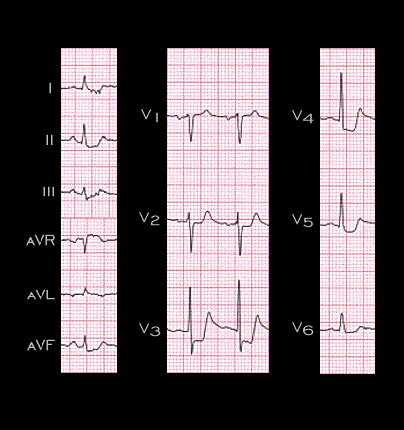
This ECG was shown on the first two pages of this section (6.1.0 and 6.1.1). It demonstrates depression of the ST segment in leads I, II, III, aVF and in leads V2-V6, reflecting non-transmural ischemia. The changes were brought on by exertion in a patient with a high grade lesion in the circumflex coronary artery. The diffuseness of ST segment depression is an indication of the inability of these changes to localize the ischemic region or the vessel involved. It should be noted however, that in patients with chest pain occurring at rest, diffuse ST segment depression, especially when it is coupled with ST elevation in lead aVR, as in this example, may indicate severe 3 vessel disease or sub-total occlusion of the left main coronary artery.
